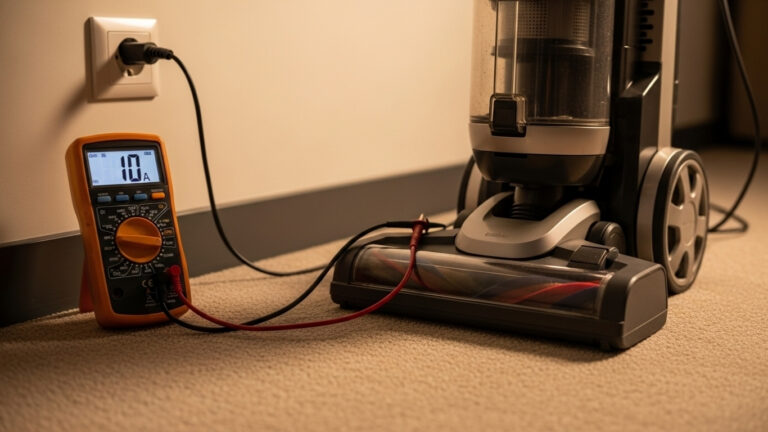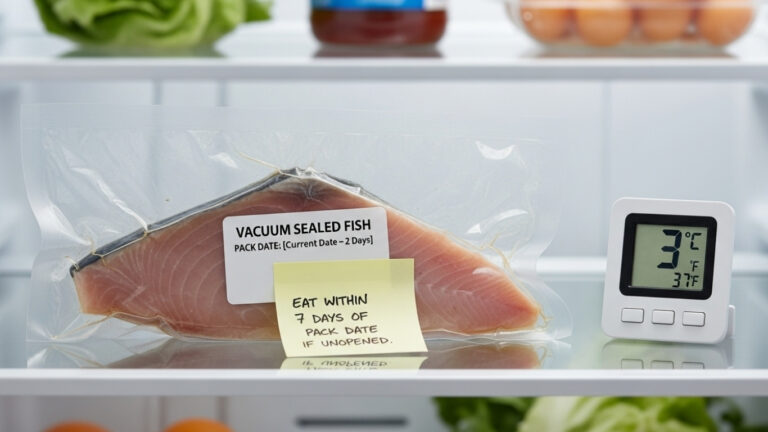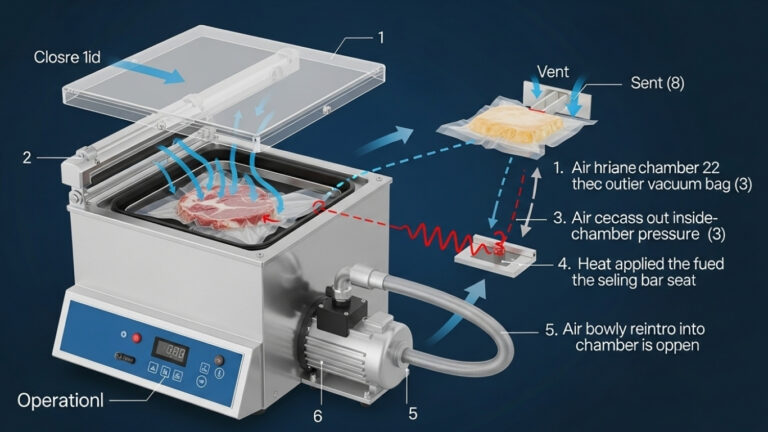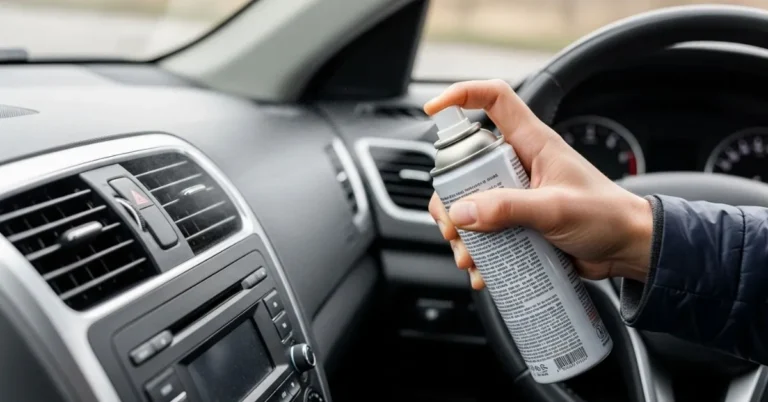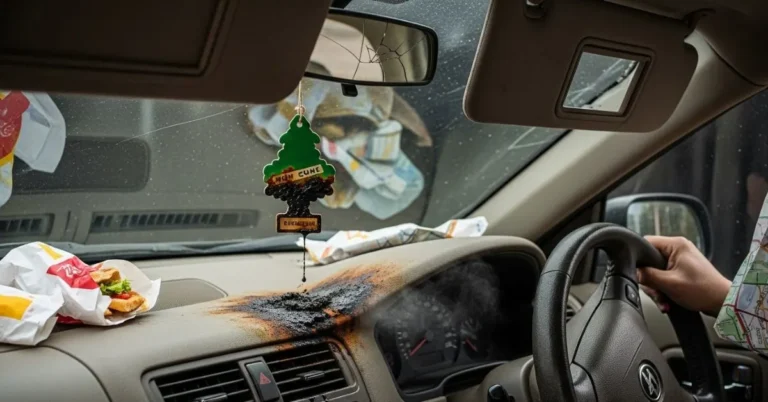Have you ever fired up your vacuum, expecting it to suck up the crumbs from last night’s snack attack, only to find it spitting those same crumbs right back at you like it’s throwing shade?
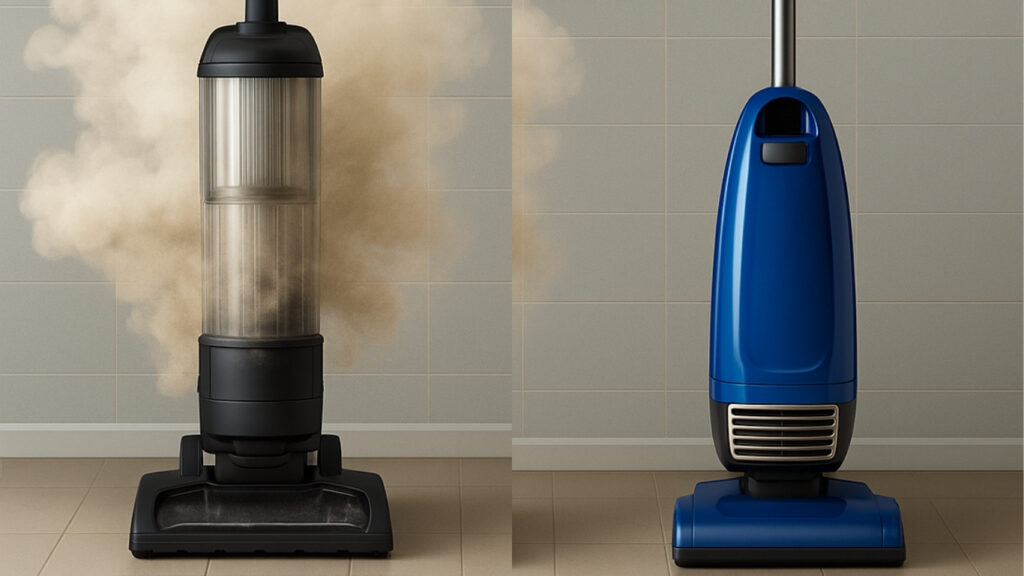
We’ve all been there.
If you’re wondering, “Why is my vacuum spitting stuff back out?” You’re not alone, and you’re not cursed. This frustrating issue is surprisingly common and, in most cases, completely fixable without calling in a pro or tossing your vacuum out the door. Whether cleaning up after kids, pets, or just life, your vacuum should make things easier, not adding to the mess.
Let’s examine the seven most common culprits behind this dusty rebellion and explore simple, affordable, and renter-friendly ways to get your vacuum back to doing its actual job cleaning.
Contents
- 1 1. The Dust Bin Is Overflowing or Packed Tight
- 2 2. Clogged or Dirty Filters Restrict Airflow
- 3 3. Hose Blockages and Air Leaks
- 4 4. The Brush Roll is Tangled, Dirty, or Jammed
- 5 5. Vacuuming Things You Shouldn’t
- 6 6. Misaligned or Loose Parts After Cleaning
- 7 7. The Motor or Internal Seals Are Failing
- 8 Recommended Tools for Preventive Maintenance
- 9 Easy DIY Maintenance Checklist (Monthly Routine)
- 10 FAQs: Why Is My Vacuum Spitting Stuff Back Out?
- 11 Expert Thoughts: Get Back to Clean, Not Chaos
- 12 About the Author
1. The Dust Bin Is Overflowing or Packed Tight
Let’s start with the basics: If your dust bin is full, your vacuum can’t breathe literally.
A packed canister or bag restricts airflow, meaning dirt and debris can’t move efficiently through the system. Instead of being sucked in, those particles get pushed right back out through the hose, the brush head, or even the exhaust vent.
Fix It:
- Empty the dust canister after every big clean, or once it’s about two-thirds full.
- Don’t wait until the bag is bursting at the seams for bagged vacuums change it when it feels heavy or if you notice reduced suction.
- Wash the dustbin with warm, soapy water once a month and let it dry completely.
Pro tip: A clean canister improves performance and prevents funky smells.
2. Clogged or Dirty Filters Restrict Airflow
Most vacuums have one or more filters that trap dust, allergens, and microscopic nasties. But those filters can quickly get clogged with debris, especially if you vacuum frequently or deal with pet hair and fine dust.
When a dirty filter blocks airflow, suction drops, and dust may blow out the front or back of the vacuum instead of staying in.
What To Do:
- Wash reusable filters monthly (check the manual to see if yours are washable).
- Replace disposable filters every 3–6 months or as needed.
- Ensure the filters are fully dry before reinstalling wet filters can damage your vacuum.
Eco tip: Opt for washable HEPA filters to reduce waste and save money.
3. Hose Blockages and Air Leaks
Sometimes the problem lies deep in the vacuum hose a sneaky place where all kinds of trouble can hide.
From LEGO bricks and clumps of pet fur to bobby pins and popcorn kernels, hoses are often ground zero for blockages. And if there’s a leak or hole in the hose? That can reduce suction so dramatically that dirt escapes back into your room.
How to Check:
- Detach the hose and shine a flashlight through one end. Can you see light at the other end?
- Use a broom handle or flexible cleaning wand to gently push out debris.
- Examine the hose for cracks or tiny holes especially near the ends where wear and tear is common.
If the hose is damaged, it’s often cheaper to replace just the hose than to buy a new vacuum.
4. The Brush Roll is Tangled, Dirty, or Jammed
Your vacuum’s brush roll (or beater bar) is like the frontline soldier it agitates carpet fibers and lifts embedded debris. But it can’t spin properly when that brush gets wrapped in hair, string, or fur. It might fling debris outward instead of guiding it into the suction path.
Maintenance Tip:
- Turn off and unplug your vacuum.
- Remove the brush roll and gently trim any tangled hair or threads using scissors or a seam ripper.
- Check the bearings at the ends of the roller they often collect gunk that needs cleaning too.
Pet owners: Clean your roller every 1–2 weeks. Trust me it makes a huge difference.
Read More: How to Turn Off Shark Robot Vacuum: Quick and Easy Guide
5. Vacuuming Things You Shouldn’t
Vacuum cleaners are excellent, but they’re not invincible. Using your vacuum on the wrong materials can clog, overwork, or damage it, leading to the “spit-back” effect you’re experiencing.
Avoid Vacuuming:
- Wet spills or moist food (use a damp/dry vac instead)
- Fireplace ash or fine powders like flour or baking soda
- Large debris (paper clips, food wrappers, LEGO pieces)
Even everyday items like clumping kitty litter can wreak havoc on your vacuum if they absorb moisture and become a cement-like mass inside the hose.
Tip: Being mindful of what you vacuum extends the life of your machine and keeps it out of landfills.
6. Misaligned or Loose Parts After Cleaning
Have you ever reassembled your vacuum after a good deep clean, only to find it acting like a dusty leaf blower? You’re probably dealing with a seal leak, loose dust bin, or misaligned filter.
When internal components aren’t properly seated, air bypasses critical sections, forcing debris to flow incorrectly.
Troubleshoot This:
- Check that the dustbin is clicked in tightly.
- Make sure every filter and gasket is seated perfectly.
- Look for missing or cracked rubber seals (especially around the hose or filter compartments).
Don’t rely on guesswork your vacuum manual is your best friend.
7. The Motor or Internal Seals Are Failing
It might be more serious if you’ve cleaned everything, checked for blockages, and replaced the filters, and the vacuum is still acting up. A worn motor or broken internal seal can reduce suction to the point that the vacuum spits out more than it sucks up.
This is especially common in older vacuums (6+ years) or budget models that were never meant for heavy use.
What Now?
- Perform a suction test: Place your palm against the hose or wand opening. If you feel barely any pull, it’s a deeper issue.
- Listen for high-pitched whining or electrical smells signs of a struggling motor.
- Check with the manufacturer if parts can be replaced economically.
If repairs cost more than a new vacuum, it’s probably time to upgrade to something more powerful and efficient.
Recommended Tools for Preventive Maintenance
While most problems can be fixed with basic cleaning, having a few tools on hand can help keep your vacuum in top shape:
| Tool | Why You Need It |
| The filter cleaning brush | Keeps filters from getting clogged |
| The flexible hose wand | Helps dislodge clogs deep inside |
| Mini brush cleaner | Perfect for cutting away hair from the roller |
| Reusable HEPA filters | Sustainable and cost-effective |
| Vacuum maintenance kits | Include belts, brushes, and screws |
Look for affordable options on Amazon or Walmart, and double-check compatibility with your vacuum brand.
Easy DIY Maintenance Checklist (Monthly Routine)
Want to prevent future blowbacks? Here’s a simple monthly checklist to keep your vacuum running like new:
- Empty and wash the dust canister
- Rinse and dry filters
- Clean the brush roll thoroughly
- Check hoses and attachments for clogs
- Wipe down the vacuum exterior with a damp cloth
Set a reminder once a month it only takes 15 minutes and will save you hours of frustration.
Read More: Why Is My Vacuum Not Sucking? 7 Common Causes and Fixes
FAQs: Why Is My Vacuum Spitting Stuff Back Out?
1. Why is my vacuum blowing stuff out instead of sucking it in?
A clogged filter, a full dustbin, or a blocked hose are usually to blame. Start by checking and cleaning each component.
2. Can using a dirty filter cause my vacuum to act up?
Yes. Dirty filters restrict airflow, reduce suction, and can lead to dust blowback from the exhaust.
3. Is pet hair bad for vacuums?
Not if you clean regularly! But if buildup is left on the brush roll or in the hose, it can cause performance issues.
4. Why is debris coming out of the brush head?
The brush roll may be tangled, or the connected hose could be clogged, forcing debris back onto the floor.
5. How often should I clean my vacuum to avoid this problem?
For casual users, at least once a month, or every 1–2 weeks if you have pets or allergies.
Expert Thoughts: Get Back to Clean, Not Chaos
If you’ve been wondering why is my vacuum spitting stuff back out, now you know it’s likely a maintenance issue, not a mechanical failure. With time and the right tools, most problems are completely DIY-fixable.
From clearing blockages to replacing filters and spotting wear early, these tips will save you money, protect your investment, and help reduce waste by keeping your vacuum out of the landfill.
Now show that rebellious vacuum who’s boss and let it get back to sucking, not spewing.

